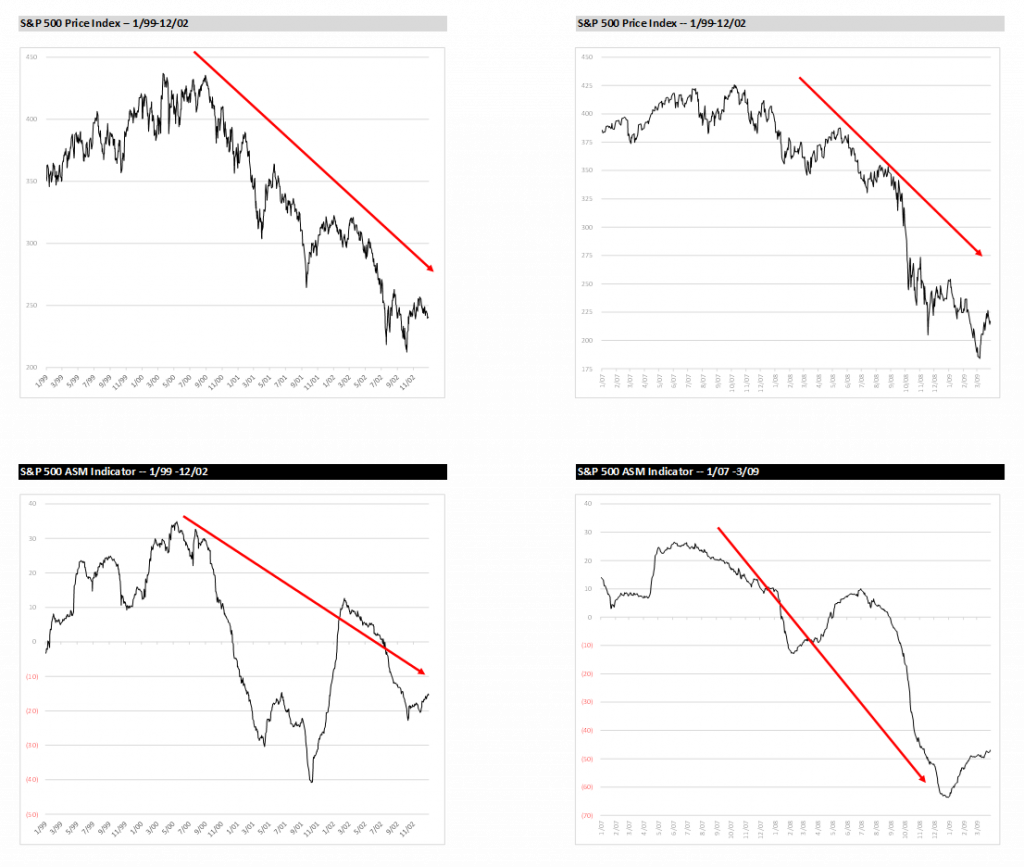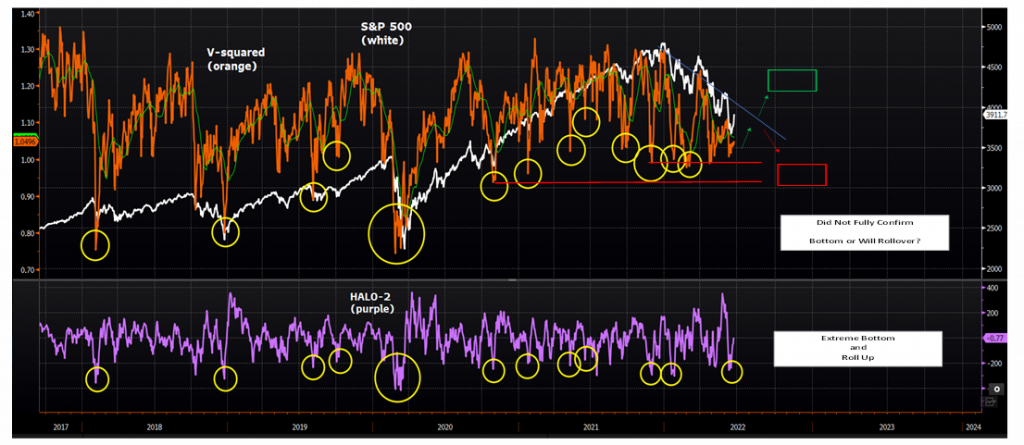The S&P 500 ended last week on a high note as it rallied strongly. The early parts of last week looked quite dubious as mainly defensive areas were the outperformers and cyclicals were the clear laggards. Friday was a bit different as there was a powerful short squeeze in recently beaten-up names that were led by Cruise Lines and Casinos. On a sector basis, Financials was the top group following the news that all 33 banks passed the Fed’s most recent stress test scenarios that opens the door to share buybacks and dividend increases.
From my perspective, the ongoing bounce off the June 17th low has all the characteristics of an oversold countertrend bounce that will likely have more upside before it ultimately fails. My indicators have not changed much at all and are still signaling that my longstanding next downside target range of 3600-3500 has a high probability of being reached.
Well, that risk level doesn’t seem too bad to some, why shouldn’t investors start buying now?
First, that base case next downside level is for the overall S&P 500. My work is suggesting that cyclically sensitive areas could be down much more and could reach 12-20% lower as their earnings revisions start to become quite negative in the coming months.
Second, I do have some data that is bubbling up that suggests that I may have to introduce a lower downside target range. At this time, there is still not enough to formally introduce this scenario, but I am continuing to keep my eyes on it.
Bottom line: Bear market rallies can be violent and tempting, but once they reach overhead resistance levels there needs to be more than hope to fuel them to keep moving higher. My process has been built on tools that detect signs of negative extremes and potential contrarian reversal signals, and at this time there is scant evidence that THE bottom in equities has occurred. Thus, my research suggests the current bounce will likely fail and investors should look to sell into it and use it to raise hedges/shorts once it has exhausted itself.
MAIN CLIENT ISSUES
- Confusion, Frustration, and Lack of Firm Views
- Was that the bottom? Did I miss it?
- How far can this rally go?
- Which style leads the way from here — Growth or Value?
- Markets were down over 20%, sentiment is bearish, and the hawkish Fed is being priced out— Are your concerns about estimates coming down and are all other negative catalysts already discounted?
SPECIFIC CLIENT QUESTIONS
- Does the equity market bottom before earnings revisions? What happens historically when equities rally when estimates cuts are beginning their acceleration phase?
- What are your tactical indicators showing about the market?
MY ANSWERS
- Does the equity market bottom before earnings revisions? What happens historically when equities rally when estimates cuts are beginning their acceleration phase?
NO. Oversold tactical rallies usually end as the tug of estimate cuts has historically pulled the S&P 500 lower.
With the equity markets rallying this week, I got a lot of push back from clients about my bearish outlook that is based on my expectation that earnings revisions are now in a negative cycle for the next 1-5 months, at minimum.
Over the last couple of months, I have been discussing that when the ASM indicator, which is my proprietary earnings revision metric, for the S&P 500 falls below zero that the average decline for the index has been 18% and the median decline of 10% over an average of five months ( Report Link ).
Despite the fact that this has happened six times since 1990 and all six occurrences have led to negative outcomes and that there was NO precedent for the S&P 500 to bottom BEFORE its ASM indicator, I have still gotten pushback. I enjoy the debate with my clients and have dug even deeper and have looked at this another way.
Over the two most recent longer duration estimate cutting cycles that took place during the 2000-2003 Tech Wreck and the 2007-2009 Financial Crisis, my study showed that the S&P 500 can have tactical oversold rallies that fail while the ASM is still falling, but the market did not make its FINAL bottom until the rate of change in estimate cuts reached its maximum (see charts on the following page).
During the Tech Wreck, the S&P 500 had seven rallies greater than 7%, which included three that were over 19%. When looking at the Financial Crisis, there were five rallies greater than 7% and three that were more than 12%. The largest rally was 24%.
Bottom line: A negative sloped ASM indicator that is below zero shows that the rate of change of estimate cuts are still accelerating. Since 1990, the equity market has NO precedent to put in a sustained bottom until the second derivative of my ASM metric turns positive. With that being said, there is clear evidence of powerful oversold rallies that end up failing. Could this time be different? YES, and I am on the look, but as of now I do not have anything suggesting that tempering my bearish view is warranted.
S&P 500 Has Oversold Bounces Within ASM Decline, BUT Falling ASM Suggests More Downside
- What are your tactical indicators showing ?
Favorable, but negative extreme was not confirmed.
In last week’s Whispers, I commented that HALO-2 had flashed a tactical buy signal, but V-squared had not yet done so. Based on this, I suggested a tactical trading low was likely rising in probability. Well, the S&P 500 worked really hard to stay in the green for Tuesday and Wednesday but pushed higher for Thursday and Friday on hopes that the Fed is likely to end its tightening campaign sooner. With the lack of full confirmation on my most aggressive tactical tools for the bounce, it is unclear if V-squared will keep rising strongly and break through its series of lower highs or will it once again fail and head to its worst readings since 2020. So, the tactical outlook suggests that there is some additional upside to come before heading lower. Where V-squared ultimately peaks will likely provide important clues to the subsequent path of the S&P 500.
Bottom line: Key aggressive indicators point to some further upside potential, but I am still viewing this rally as countertrend and expect it to fail. Thus, I continue to caution about chasing the bounce and instead am looking for signs of peaking to lower risk exposure and add hedges/short. This process could take about 1-2 weeks.
HALO-2 & V-squared Description – The proprietary Fundstrat Portfolio Strategy V-squared indicator shown in the top chart (orange line) shows the ratio of VXV (the 3-month CBOE S&P 500 Volatility Index) and the VIX (the 1-month CBOE S&P 500 Volatility Index). This tool is also useful for identifying aggressive tactical trading bottoms for the S&P 500.
The proprietary Fundstrat Portfolio Strategy HALO-2 Model, which is the purple line in the lower chart shown above, is the raw tactical data behind our standard HALO multi-factor model described on the previous page. It is useful for identifying aggressive tactical trading bottoms for the S&P 500.










